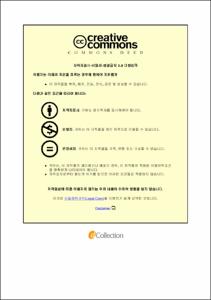축산폐수를 이용한 미세조류 배양
- Alternative Title
- Utilization of swine manure for microalgae cultivation
- Abstract
- There have been lots of studies using microalgae for biological purification of wastewater. Various organic matters and nutrients in wastewater can be used for microalgae cultivation. With high contents of protein, microalgae are used as high-protein fodders. And recently they are receiving more attention as sources of renewable energy.
Therefore, this study 1) checked a proper stage among the 4 steps of swine manure process for microalgae cultivation; 2) selected optimal marine microalgae species with the highest growth rate; 3) converted concentrations of the total nitrogen in wastewater, calculated the optimal amount of the total nitrogen for microalgae cultivation and checked removal efficiency; and 4) reviewed changes in lipid constituents cultivated with the swine manure.
When Nannochloropsis oculata (NLP-M088) was cultivated in wastewater generated from the 4-step swine manure process, the specific growth rate (SGR) recorded in liquid manure was the highest with 0.359 ± 0.010. As a result of cultivating Nannochloris atomus (NLP-M089), Tetraselmis suecica (NLP-M090), Nannochloropsis oculata (NLP-M088) and Phaeodactylum tricornutum (NLP-M075) in liquid manure, N. oculata had the highest SGR of 0.312 ± 0.006, with the initial cell density of 1,429×104 cells/mL and 9,285 ± 328×104 cells/mL on the 6th day. And then P. tricornutum followed with SGR of 0.275 ± 0.016. For cultivation after replacing the swine manure with f/2 medium, 48 mg and 24 mg of total nitrogen showed higher growth rates than f/2, and more than 90% of nitrogen and phosphorus in the swine manure were removed. The lipid content of the microalgae was similar to cultivation in f/2 medium.
The study revealed that swine manure can replace chemical medium for microalgae cultivation; microalgae remove organic matters in swine manure, which not only improves aquatic environments but also lowers microalgae cultivation costs, facilitating more competitive microalgae cultivation.
- Issued Date
- 2016
- Awarded Date
- 2016. 2
- Type
- Dissertation
- Publisher
- 부경대학교 글로벌수산대학원
- Alternative Author(s)
- Suhwa, Kang
- Affiliation
- 부경대학교 글로벌수산대학원
- Department
- 글로벌수산대학원 양식학과
- Advisor
- 김창훈
- Table Of Contents
- Abstract ⅲ
1. 서론 1
2. 재료 및 방법 5
2.1 시험생물 및 배양방법 5
2.2 축산폐수 8
2.3 미세조류 배양이 가능한 축산폐수 공정단계 선별 9
2.4 축산폐수 대체 배양에 적합한 미세조류 종 선택 10
2.5 미세조류 성장률 최적화를 위한 적정 주입량 계산 11
2.6 미세조류 배양 후 축산폐수 내 영양염 제거율 확인 11
2.7 세포 내 지질 성분 변화를 통한 적정 폐수 주입량 산정 11
2.8 미세조류 성장 측정 12
2.9 통계처리 12
3. 결과 13
3.1 미세조류 배양이 가능한 축산폐수 공정단계 선별 13
3.2 축산폐수 대체 배양에 적합한 미세조류 종 선택 16
3.3 미세조류 성장률 최적화를 위한 적정 주입량 계산 21
3.4 미세조류 배양 후 축산폐수 내 영양염 제거율 확인 25
3.5 세포 내 지질 성분 변화를 통한 적정 폐수 주입량 산정 26
4. 고찰 28
5. 요약 32
감사의 글 34
참고 문헌 35
- Degree
- Master
- Files in This Item:
-
-
Download
 축산폐수를 이용한 미세조류 배양.pdf
기타 데이터 / 1.19 MB / Adobe PDF
축산폐수를 이용한 미세조류 배양.pdf
기타 데이터 / 1.19 MB / Adobe PDF
-
Items in Repository are protected by copyright, with all rights reserved, unless otherwise indicated.